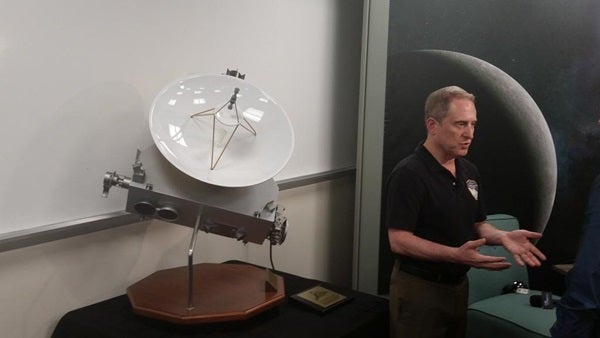Sunday evening, the mission’s principal investigator, Alan Stern, shared some of his thoughts about the past week and the coming days with the horde of media who has descended on the Johns Hopkins University Applies Physics Lab in Laurel, Maryland, for the historic flyby. When asked about the July 4 events (which caused the probe to go into safe mode), he replied: “You mean the fireworks?” The team worked feverishly that weekend to first understand the problem and then to make sure that the mission would go on without a hitch.
So far, spectra of the surfaces of Pluto and its largest moon, Charon, are about as good as the best ground-based telescopes can achieve. That’s right where the scientists expected to be at this stage, and they eagerly anticipate the factor-of-100 better resolution they’ll get at closest approach. Spectra have yet to show any constituents in Pluto’s atmosphere; the science team predicts seeing those sometime between 36 and 8 hours before the flyby.
When asked what his biggest surprise of the mission so far has been, Stern replied: “I am really blown away that we have not yet found any new satellites.” The current count, five, hasn’t budged since 2012. He remains optimistic that new ones — and perhaps even rings — will turn up in observations made during the next few days. The world should soon know.
Follow Astronomy on Twitter (@AstronomyMag) for Talcott’s updates from mission control at Johns Hopkins, and stay tuned to Astronomy.com’s Pluto section for all the latest news and images.










